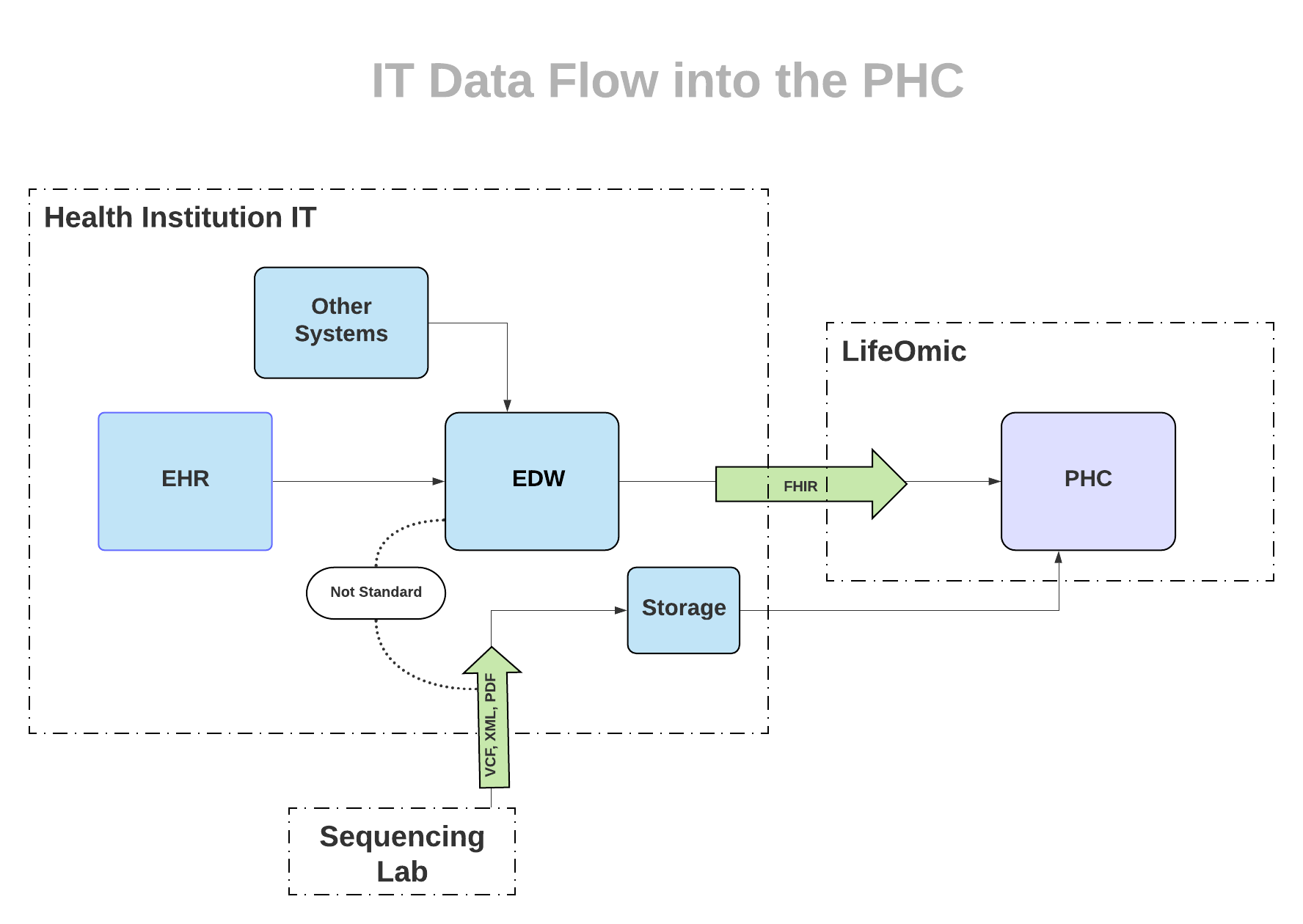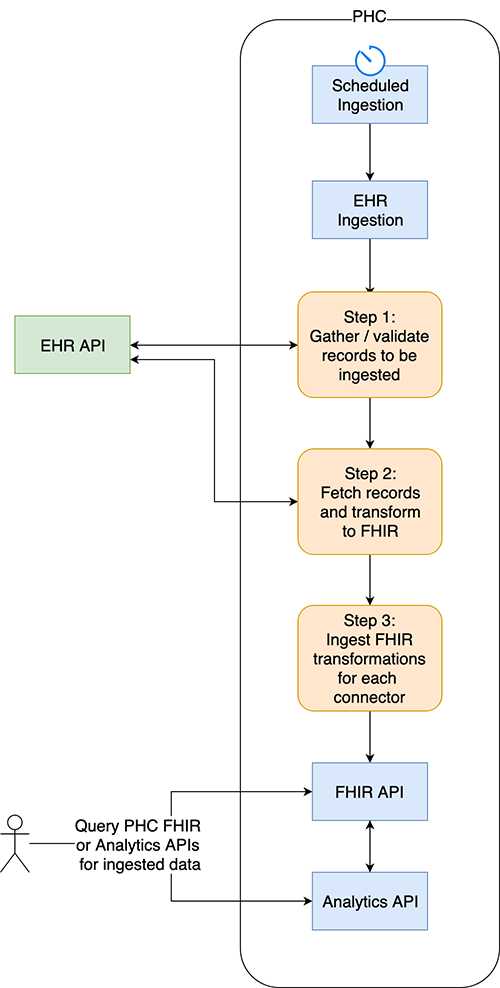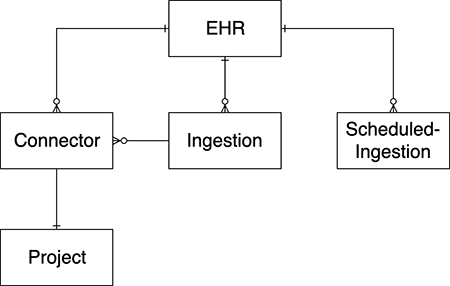Overview of Data Import

Terms
API – Application Programming Interface – a protocol for communicating with a software application
FHIR - Fast Healthcare Interoperability Resources – a standard for exchanging healthcare information electronically
EHR – Electronic Health Record (such as Epic) - an IT system that stores data and captures the patient’s health records in real-time.
EDW – Enterprise Data Warehouse – a database often used by EHRs to store clinical notes, billing information, patient satisfaction, and so on.
Cerner and Epic EHR Integrations
The LifeOmic Platform integrates with Cerner and Epic using the LifeOmic Platform SMART on FHIR app. This app is installed in the EHR and used to import data into the LifeOmic Platform. For more information, see the SMART on FHIR App.
Other EHR Integrations
LifeOmic provides the ability to connect your EHR (Electronic Health Record) system to the LifeOmic Platform for automatic ingestion.
High-level Ingestion Flow

API Models
Below are the API models used to achieve this EHR ingestion flow.

EHR: Represents the metadata needed for the LifeOmic Platform to:
-
Authenticate with an EHR
-
Download data during an ingestion
-
Transform the data to FHIR (based on
ehrType)
Connector: Represents a connection to a LifeOmic Platform project which should receive data ingested from the EHR
Ingestion: Represents the synchronization of data from the EHR into the LifeOmic Platform
Scheduled-Ingestion: Allows for scheduling an ingestion (such as every day)
See the EHR API documentation for more info.
Wearable and Medical Device Integrations
The LifeOmic Platform can receive data from a growing variety of wearables and medical devices. For more information, click here.
Health Institutions
Health Institutions can either send their data to an EDW where data is stored and converted to FHIR before being sent to the LifeOmic Platform, or they use an API to skip the EDW and directly convert the data to FHIR and send the data to the LifeOmic Platform.
Data in the EDW is often structured differently than in the EHR. How it's structured depends on the EDW team and their vendors as there is no standard.
Conduits from an EDW or an EHR can have many paths into the LifeOmic Platform. Most health ecosystems require data expertise on their side to help map the non-genomic health data into FHIR in preparation for the LifeOmic Platform environment. This mapping is diverse and non-standardized between the EHR vendors and can be a complicated process. However, our Customer Engagement team will work with you and your team to make a successful conduit.
Many times the process of converting data into FHIR and importing it into the LifeOmic Platform will show opportunities for health institutions to improve their own data collection procedures.
Options for getting data into the LifeOmic Platform:
-
The Health Institution IT can convert the data to FHIR and push it into the LifeOmic Platform via the LifeOmic Platform FHIR API.
-
If the health information is in a CSV file, the Task Service can be used to convert data into FHIR and push it into the LifeOmic Platform.
-
If you use Cerbo EHR, LifeOmic's EHR integration can handle the conversion.
Genomics Labs
The LifeOmic Platform can store genomic data and aid you in interacting and visualizing results. Here are the steps needed to get genomic data into the platform:
-
The Health Institution sends samples to the sequencing lab.
-
The Health Institution creates a FHIR Patient resource for each subject that provided a sample for sequencing. The FHIR Patient resource is created using the LifeOmic Platform FHIR API, CLI, or app.
-
The sequencing lab provides the results of the sequencing to the Health Institution in the form of files. The type and format of the files vary by sequencing lab.
-
The Health Institution uploads the files to the LifeOmic Platform using the LifeOmic Platform Files API, CLI, or app.
-
Now both the genomic files and subject data are in the LifeOmic Platform, but the platform needs to be told to index the genomic files and associate it with a subject. The Health Institution can initiate the indexing of the genomic data by using the LifeOmic Platform API, CLI, or app (coming soon). The Health Institution will need to know which files belong to which LifeOmic Platform subjects. This could be done by mapping a lab provided identifier with a subject. LifeOmic Platform subjects are typically referenced by the ID of the FHIR Patient resource. The FHIR Patient resource can also be extended to contain other identifier information like MRN or Lab Identifier to make the mapping easier.